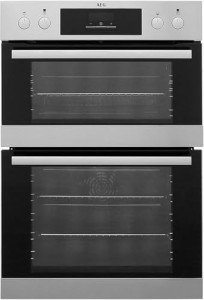This Story Behind Built In Ovens Will Haunt You For The Rest Of Your Life!
Built-In Ovens in the UK: A Comprehensive Guide
Built-in ovens have become an essential function in modern-day kitchen areas across the UK, providing both functionality and style. They are designed to fit seamlessly into kitchen cabinets, using a smooth and integrated appearance that matches contemporary kitchen designs. This short article checks out the advantages of built-in ovens, the various types readily available, key features to consider, and regularly asked concerns that will help consumers make notified decisions.
Advantages of Built-In Ovens
Choosing a built-in oven comes with various advantages, which consist of:
Space-Saving Design: Built-in ovens are designed to fit within kitchen cabinets, making them perfect for smaller spaces where free-standing systems might use up too much space.
Aesthetic Appeal: These ovens use a tidy, contemporary appearance that improves the general appearance of the kitchen. They can be placed at eye level, making them accessible while decreasing flexing or bending.
Integrated Technology: Many built-in ovens come geared up with advanced cooking innovations, including convection cooking and self-cleaning functions, making cooking more effective and hassle-free.
Increased Resale Value: A modern, trendy kitchen with built-in appliances can considerably increase a home's resale worth, making it more attractive to possible purchasers.
Range of Options: Built-in ovens been available in various sizes and designs, permitting house owners to pick one that fits their particular kitchen design and cooking needs.
Types of Built-In Ovens
Built-in ovens are offered in numerous setups, each dealing with different cooking designs and preferences. Here are the primary types:
Type of Built-In Oven
Description
Single Ovens
These ovens include one compartment, normally appropriate for general baking and roasting needs.
Double Ovens
Including 2 compartments, double ovens enable synchronised cooking at various temperatures, making them ideal for large households or those who frequently captivate guests.
Combination Ovens
Integrating a standard oven with a microwave, these versatile units save area and time, enabling quick heating and cooking.
Steam Ovens
Utilizing steam cooking innovation, steam ovens are ideal for healthy cooking, maintaining wetness and nutrients in food while supplying a special cooking approach.
Wall Ovens
Set up higher up in the kitchen, wall ovens can be single or double. They allow easy access while freeing up area on the counter.
Key Features to Consider
When choosing a built-in oven, it's important to assess certain features. Consumers ought to consider:
Size and Capacity: Determine the area available in your kitchen and choose an oven that fits easily without frustrating the style.
Energy Efficiency: Look for ovens with greater energy scores, as they can conserve money with time and are more eco-friendly.
Cooking Functions: Different ovens come with different cooking modes— such as baking, grilling, and rotisserie. Assess which works deal with your cooking style.
Control Options: Newer designs frequently include touch controls, digital interfaces, and smart technology that enables remote operation by means of mobile phone apps.
Self-Cleaning Features: Many built-in ovens included self-cleaning choices, substantially simplifying oven upkeep.
Finish and Design: Choose finishes— like stainless-steel, black, or white— that complement the general kitchen visual.
Popular Brands in the UK
Several brand names control the built-in oven market, each offering numerous features and rate points. A few of the most popular alternatives include:
- Bosch
- Siemens
- Neff
- Samsung
- Hotpoint
- AEG
- Miele
These brand names are known for their reliability, development, and client service, making them a relied on option for consumers.
Frequently Asked Questions (FAQs)
1. Are built-in ovens more expensive than freestanding models?
Built-in ovens tend to be more costly than freestanding designs due to their customized sizing, styling, and advanced features. However, they supply higher worth in terms of aesthetics and performance.
2. Can I set up a built-in oven myself?
While some useful house owners may try a DIY setup, it is typically advised to work with an expert to ensure proper installation, particularly worrying electrical and plumbing connections.
3. How do I clean my built-in oven?
Lots of built-in ovens included self-cleaning choices, which considerably lower the effort needed. For designs without this function, regular cleaning with non-abrasive cleaners and a soft cloth is vital for upkeep.
4. What is the average life expectancy of a built-in oven?
Normally, built-in ovens can last in between 10 to 15 years, depending on use and maintenance. Regular servicing can help extend the device's lifespan.
5. Can linked webpage replace a built-in oven with a different brand name?
Yes, built-in ovens can generally be replaced with any suitable model, however it is important to guarantee that the brand-new oven matches the existing cut-out area in the cabinets.
Built-in ovens provide an advanced blend of energy and style, making them an integral part of modern-day kitchen areas in the UK. With numerous types, distinct functions, and a range of choices offered from well-known brand names, homeowners have adequate choices to select an oven that satisfies their cooking requirements and kitchen aesthetics. By comprehending the benefits, types, and important features, consumers can make educated choices that improve their cooking experiences. Whether for day-to-day meals or unique events, a built-in oven is a financial investment that assures benefit and quality for several years to come.
